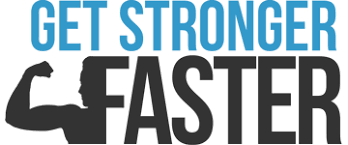Get stronger in just 13 minutes

No this is not just another grandiose late night infomercial claim. This is an important finding from recent research that might change the way you think about strength training.
Unless your strength training is your number one priority, chances are your time in the gym is limited. We have good news…you don’t need to grind it out for 2 hours in the gym to get stronger. According to recent research you don’t even need 3 sets of a given exercise to make gains.
Well respected researchers in the Strength and Conditioning field, Brad Schoenfeld, Brett Contreras and others, tested strength improvements over an 8 week period (3 sessions a week) among the following 3 groups:
GROUP 1 one set to failure
GROUP 2 3 sets (8-12 reps)
GROUP 3 5 sets (8-12 reps).
If you are an efficiency aficionado check this out: there was NO SIGNIFICANT DIFFERENCE IN STRENGTH GAINS between each group. Each subject in each group got stronger over the 8 week period, so there is value in all 3 programs. But don’t fool yourself into the overly simplified conclusion that more is necessarily better. After all…what’s the point in doing more than needed to get the same result!!
Here’s the real eye opener: in this study those in the 5 sets per exercise spent up to 70 minutes per session in the gym, compared to just 13 minutes for the one set to failure group. If you want to get in, get out and still get strong: try one set to failure.
But there is, of course, a catch: your one set has to be to FAILURE. That means pushing yourself so hard you have nothing left in the tank. You couldn’t possibly complete another repetition. Your hands can’t hold the bar, the burning in your legs is excruciating and your feet feel like they are concrete blocks. You get the idea. Getting to this point is very difficult for most people. In our experience, most people think they have reached the point of failure too early. So maybe get in, go hard, get out and get strong is more appropriate.
If your goal is to add muscle mass, you want thicker and bigger muscles, then according to this research you need a higher volume (5 sets) approach. So be careful engaging in the merits of your one set strength plan approach to a body builder or fitness competitor or an athlete than needs to put on size for their sport. For most of us, getting strong while living lean and light is optimal.
So what type of additional exercises might be appropriate for one set to failure? This study included bench press, military press, wide grip lateral pulldown, cable rows, barbell backsquat, leg press machine and knee extensions. Other good options would be hex bar (trap bar) deadlifts, front squat or goblet squats, hip thrusters, landmine presses, bent over rows and pull ups. Single leg exercises (single leg RDL, single leg squat, lunges) could be considered for intermediate to advanced lifters as well.
If you are a complete newbie to resistance training consider holding off on this approach for now to focus on the quality of your movement: technique and form. Commit to spending some time in the gym to learn how to lift safely, understand what you are trying to accomplish and build a foundation to prepare yourself for more intense workouts. We wouldn’t recommend starting crossfit competition style traiing or high intensity interval training right off the bat. And similarly, lift to failure would not be a wise place to start.
